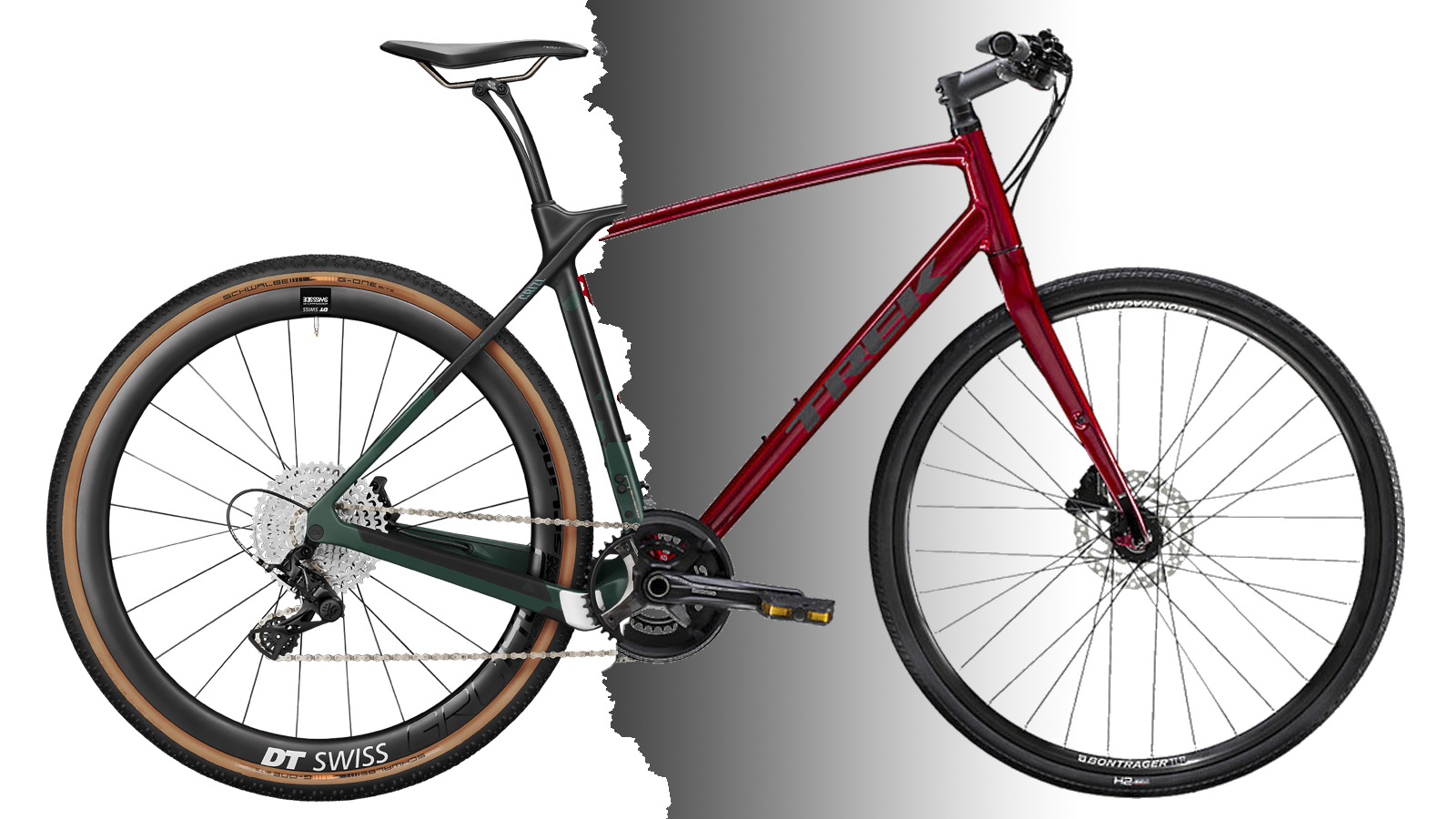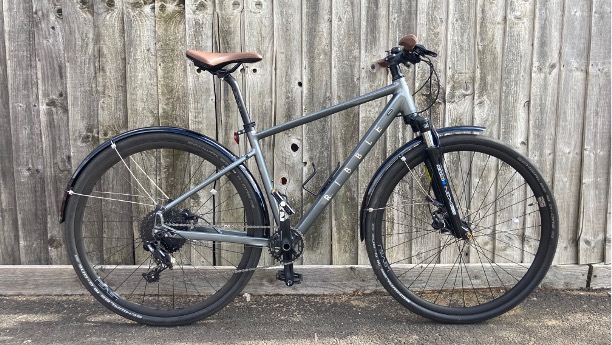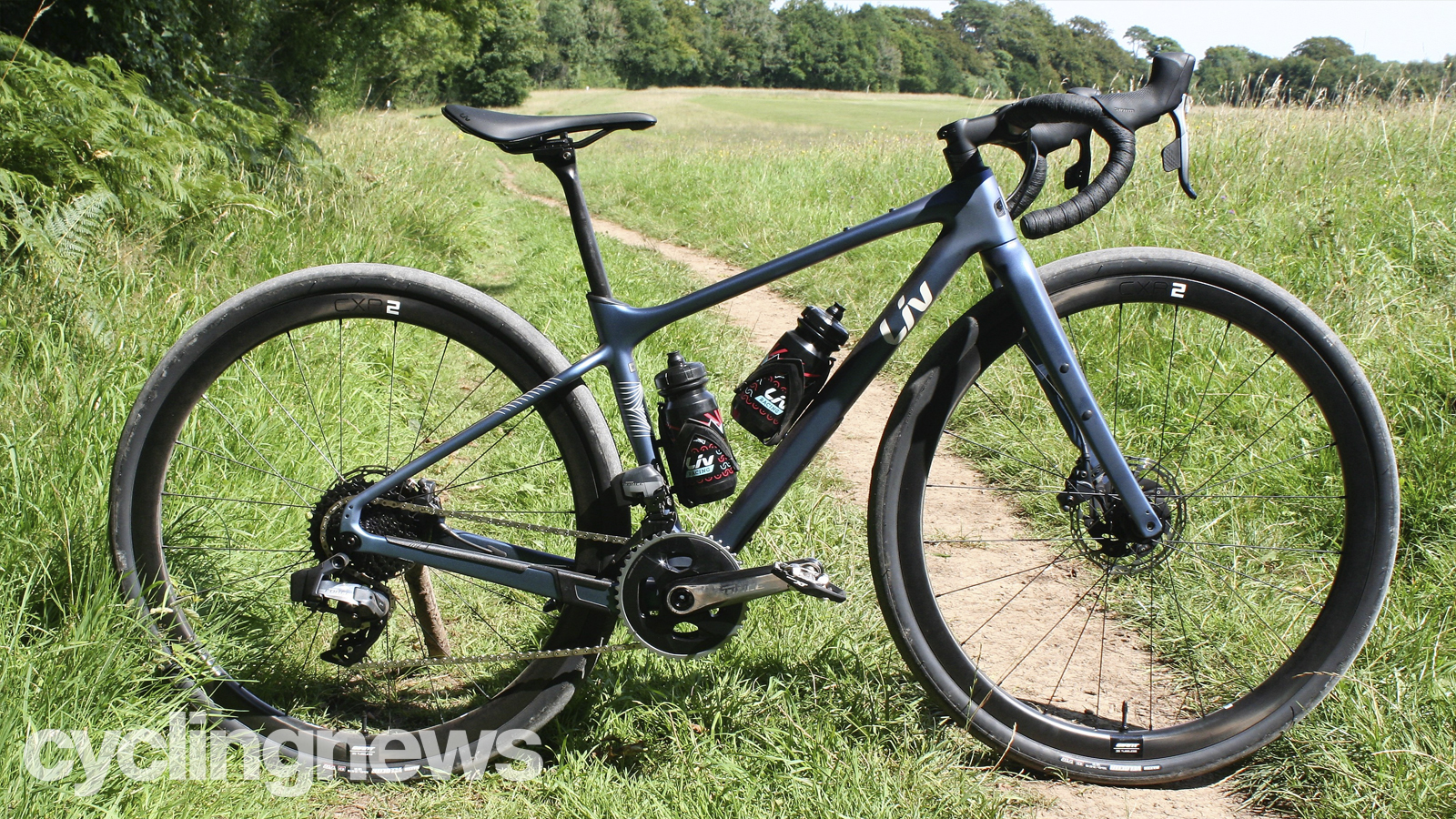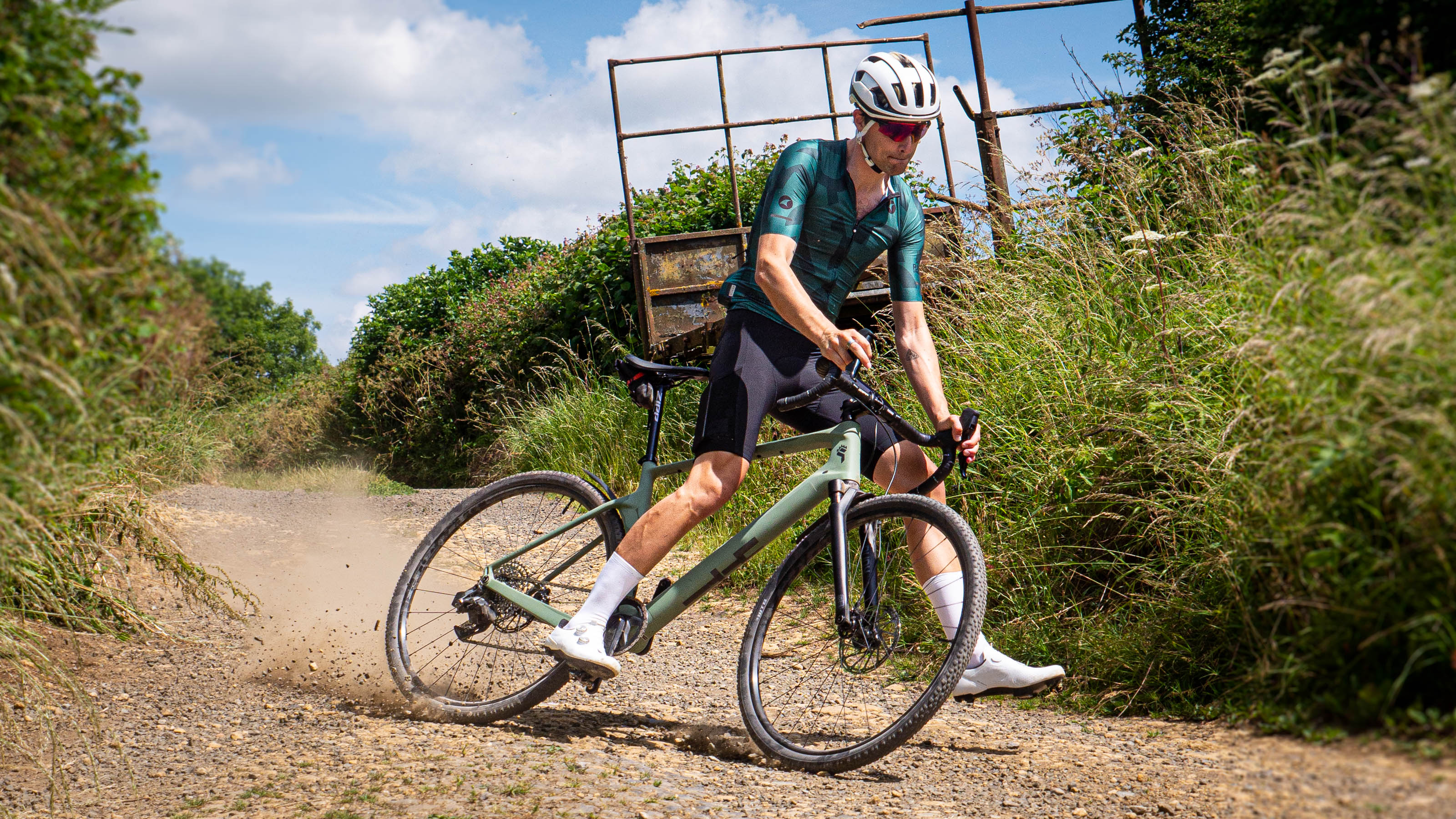Gravel bike vs hybrid bike: understanding the differences
What's the difference between a gravel bike and a hybrid bike, and which one should you buy?

Gravel bikes and hybrid bikes both combine elements of a road bike and a mountain bike. They both usually have wider tyres than a road bike, but less so than a mountain bike. Their intended uses and features quite a lot though.
Here, we'll walk you through the features of gravel bikes and hybrid bikes, where they differ and help you to choose whether a hybrid bike or a gravel bike is best for you.
Hybrid bikes vs gravel bikes in a nutshell

Hybrid bikes, sometimes called fitness bikes, have been around for decades. They take the flat-bar comfort and upright position of mountain bike geometry and pair it with the 700c wheels and skinnier tyres from road bikes (usually around 28-32mm), to offer on-road speed without the drop bar position and forward-leaning geometry, which many beginners can find unfamiliar, uncomfortable, and potentially off-putting.
Hybrid bikes are designed to be do-it-all bikes for everyday riders, and while the focus is usually paved roads, some are capable on certain off-road surfaces too, like fine gravel, canal towpaths, and bridleways. You can also choose a women's hybrid bike if you want women's-specific geometry and touchpoints.

Gravel bikes also combine road and mountain bike features, but in somewhat of an opposite approach. The most noticeable feature of gravel bikes is that they share the drop handlebar with road bikes (in most cases, at least). Their geometry is also more closely aligned with road bikes, albeit not quite as aggressive or forward-leaning as a pure road bike.
The wheels are where the mountain biking influence shines brightest. Gravel bike wheels are still 700c in diameter (though some do use smaller 650b wheels), but the rims (and thus, the bike's frame and fork too) are built to take wider tyres, usually up to around 50mm.
The result is a bike that offers an aerodynamic rider position for speed over longer durations but with the capability of enduring rougher terrain such as gravel roads and singletrack. Gravel bikes are designed to perform on the road, whilst being able to continue beyond where the tarmac ends.
The latest race content, interviews, features, reviews and expert buying guides, direct to your inbox!
Gravel bikes vs hybrid bikes in more detail
So with that basic explainer in mind, let's dig deeper into the two types of bike and discuss which is the right one for your cycling goals.
Gravel bikes

The best gravel bikes are (usually) drop-bar bikes that are designed to ride on almost any surface, but they excel at riding on gravel or dirt roads. For comparison, a gravel bike's silhouette looks remarkably similar to what you may picture a road bike to look like.
However, upon closer inspection, factors like geometry and component selection make them look and ride differently. Compared to hybrid bikes, gravel bikes are much more oriented toward long-distance off-road exploration, as well as pushing the limits of performance and/or endurance.
The sport of gravel riding spawned from two trends.
The first was that everyday riders started to explore further, beyond the tarmac to roads that weren't paved, in a bid to get away from fast-moving traffic.
The second was the advent of events that took the sportive/fondo structure off the beaten path, featuring long miles on dirt roads with a race at the front and mass participation everywhere else.
Lots of riders didn't even start out riding gravel on a specific gravel bike. They would use either a road bike with wider, tougher tyres, a cyclocross bike, or a hardtail mountain bike. But as the interest grew, gravel-specific bikes were born, which benefit from some distinct features.
The thing to note with gravel bikes is that there are numerous different types catering to various rider types. Some are designed for speed on light gravel, while others feature geometry that even certain mountain bikes would call progressive. Some models will have even more relaxed geometry for adventuring on bikepacking trips or on singletrack mountain bike trails.

Gravel race bikes, on the other hand, will have relatively steeper frame geometry angles. On average, the geometry of gravel bikes is relaxed enough to create stability over off-road terrain, but not so relaxed that the position cannot still hold speed on the road.
In terms of component selection, gravel bikes will have components that are designed to hold up to the forces of high-paced off-road riding. Tyres and wheels will usually be wider than those found on hybrid bikes to create stability and grip off-road, and the tyres will usually be tubeless, with tough casings to protect against punctures.
Gravel bike brakes will almost always use disc brakes because they are simply the most efficient and safest way to slow down when riding off-road and they're less prone to contamination than rim brakes.
The gearing will be lower to accommodate steep climbs and lower relative speeds. Many gravel riders prefer 1x drivetrains adopted from the mountain bike world, but 2x systems still exist.
Some gravel bikes are becoming even more specialised. For instance, adventure-oriented bikes will have frames with plenty of mounting points for bikepacking bags and accessories. The desire to ride more singletrack has also created the demand for gravel-specific dropper seat posts and suspension forks.
Hybrid bikes

If gravel bikes are designed and marketed for the off-road exploration side of cycling, hybrid bikes are meant for everyday riders looking to get from A to B.
Hybrid bikes, sometimes called fitness bikes or commuter bikes, are also designed to be ridden on a variety of surfaces, but they are much less capable of riding on rough terrain than gravel bikes. They will also be less efficient on paved surfaces due to the more upright ride position.
Hybrid bikes range in design and usually have flat bars. Some feature step-through frames and most will have provisions for fitting mudguards and pannier racks. While designs and intentions vary, hybrid bikes are meant to be ridden on a little bit of everything.
While hybrid bikes won't be the fastest on-road or off, they are perfect for riding around town or commuting. For this reason, they don't take many cues from racing or performance riding. The geometry of these bikes will be conservative and meant to prop a rider up in an upright position, with comfort prioritised over efficiency and speed. Components are also more practical, more inexpensive, and cheaper to maintain.

For example, hybrid bike tyres will generally be narrower and slicker than those on a gravel bike, featuring less grippy knobs. They will still have tougher casings and compounds so that riders don't puncture on off-road surfaces, and you'll be able to take these on any paved surface, as well as the smoother end of the off-road surface spectrum.
The gearing may also be more relaxed than gravel bikes. While a gravel bike's gears are meant to accommodate both high-speed flat sections and steep climbs, hybrid gearing is meant to give the rider more options while riding at slower speeds. This means there will be more gear options (achieved by often using a 2x or triple drivetrain) and the gears will be lower, and thus, easier to pedal.
Components like handlebars, saddles, and grips also follow the same pattern, so are typically geared towards comfort and everyday use.
Should I buy a gravel bike or a hybrid bike?
The decision to buy a gravel bike or a hybrid bike comes down to what style of riding you want to do.
If you intend to go on relatively short bike rides around town, on paved paths, or on smoother off-road surfaces, hybrid bikes are a great option. They also work for recreational riding, up to a point. Hybrid bikes are also great for using the bike as a transportation tool, such as commuting to the office or riding from A to B.
Read our guides to the best hybrid bikes and best budget hybrid bikes for some top picks.
However, if you get into the more performance side of recreational riding, where you are riding longer distances at a faster pace and want to travel further off the beaten path, you will be better served by a gravel bike.
We've got guides to the best gravel bikes and best budget gravel bikes to help you choose.
Of course, if you're looking to travel further and faster but want to remain on paved roads, then a road bike could be the best choice, and if your off-road riding is taken to the extreme, then mountain bikes offer the extra capability.
Paul has been on two wheels since he was in his teens and he's spent much of the time since writing about bikes and the associated tech. He's a road cyclist at heart but his adventurous curiosity means Paul has been riding gravel since well before it was cool, adapting his cyclo-cross bike to ride all-day off-road epics and putting road kit to the ultimate test along the way. Paul has contributed to Cyclingnews' tech coverage for a few years, helping to maintain the freshness of our buying guides and deals content, as well as writing a number of our voucher code pages.
